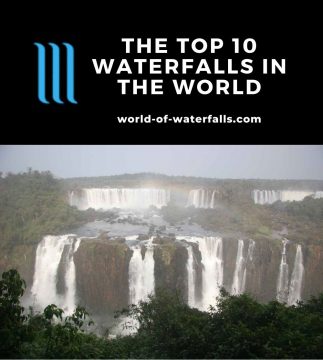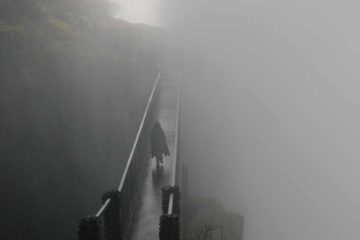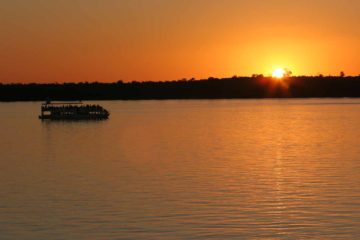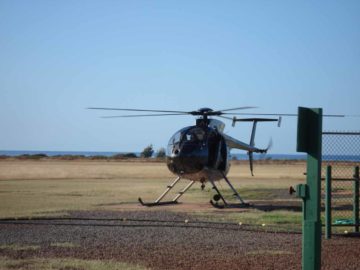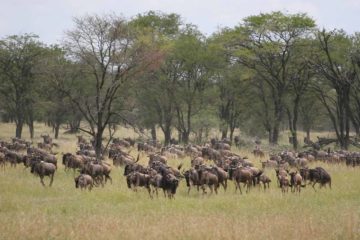About Victoria Falls
Victoria Falls is possibly the largest singular waterfall in the world. The falls was also known as Mosi-oa-Tunya, which translates to “the smoke that thunders” in the language of the Kololo Tribe, who were present in the 1800s. Later, David Livingstone, the first European to see the falls, named it in honor of Queen Victoria in 1855. So awestruck was he upon seeing the falls that he described the falls saying “scenes so lovely must have been gazed upon by angels in their flight.” Sometimes I wonder if Livingstone meant the kind of view seen in the photograph above.
This waterfall is what Julie and I consider one of the “Big Three” (the other two being Iguazu Falls and Niagara Falls). These are the only waterfalls of such size left standing in the world. There may have been others through earth’s history, but they’re either sacrificed by damming or diversion, or they may have been casualties of changes in geology and climate.
Speaking of grandeur, Victoria Falls is a UNESCO World Heritage site as it boasts some mind boggling dimensions. The falls itself is basically where the mighty Zambezi River drops its entire width (about 1.7km across or just over a mile) over a 108m vertical wall into a narrow gorge. The volume of water over the falls typically ranges between 300-3,000 cubic meters per second. The annual mean volume is said to be just over 1,000 cubic meters per second or 38,000 cubic feet per second or 1 million liters per second.
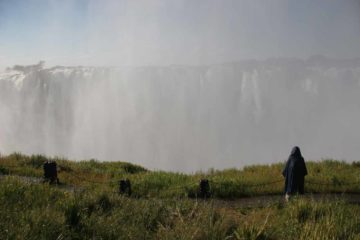
Since the falls plunges into a narrow gorge, all the walkways and viewpoints (with the exception of Livingstone Island) are across the misty chasm directly opposite the falls. This creates a situation where in high flow (which was the case in our visit), the mist from the falls has nowhere to go but up and rises well higher than the lookouts. Then, the rising mist eventually falls back to the ground creating a virtual nonstop downpour. This was what made wearing a poncho a must in order to prevent our clothing, ourselves, and most importantly our cameras and other electronics from getting drenched.
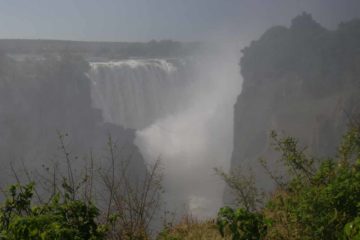
When conditions permit (it wasn’t for us), Livingstone Island (the island where David Livingstone first gazed upon Vic Falls) allows onlookers a different edge-of-the-world view of the falls. There’s even a Devil’s Pool where it’s said that you could cheat death and literally swim right on the edge of the 108m drop!
You can read about some of the activities that we’re aware are available here, including those we partook in like the aerial tour and the sunset cruise.
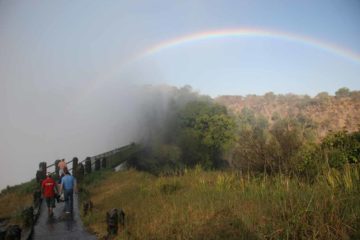
As a result of our experience and observations at Victoria Falls, we were quickly made aware that the type of experience you might get at the falls heavily depends on timing.
Come (as we did) at a time when the Zambezi River is in high flow and nearly all viewpoints become a misty mess obscuring views and drenching onlookers. Though the falls may be the most impressive at this time, we found the photography and the viewing experience in general from the ground a bit difficult.
Come at a time when the Zambezi River would be in low flow and the falls would segment into several smaller, narrower waterfalls exposing the immense wall underneath. This would be the time when I’d imagine more activities concerning the falls become available though the magnitude and visual impact might be dimished.
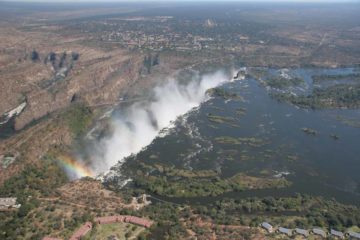
Like all waterfalls, the water’s flow recedes the underlying layer of rock making it “move” upstream over time. What makes Victoria Falls unusual and different from other waterfalls (like Niagara and Iguazu) is that instead of moving continuously upstream over time, this waterfall creates cracks in its underlying basalt wall at a different angle than the cliff responsible for the current state of the falls. That angled crack eventually forms a new chasm intercepting the flow of the Zambezi River (becoming the new brink of the falls) and leaving the remaining knife-like cliff that once supported the edge of the falls bare and exposed.
Over time, the result is a series of gorges (currently there’s said to be some 6 or 7 of them with the oldest ones being furthest downstream) zig-zagging up to the falls’ current position. This process is still ongoing as a new crack has started to form on the Zimbabwe (western) side near the section known as the Devil’s Cataract. This really didn’t become apparent to us until I reviewed our aerial photos.
Finally, like its other Big 3 counterparts, Victoria Falls has named sections such as the just mentioned Devil’s Cataract, the Main Falls, Horseshoe Falls, and Rainbow Falls (among others). The named sections are typically segmented or partitioned by islands above the brink of the falls (namely Cataract Island and Livingstone Island).
However, we observed that these named waterfalls blended together (especially since it was during high flow) into a singular wall of water. I’m pretty sure the average visitor may not even be able to tell let alone care about which section is which (despite the help of signs).
While I can go on and on about various aspects of Victoria Falls, perhaps photos have more impact. So without further adieu, check out the photos below to see more of this world wonder.
Related Top 10 Lists
Trip Planning Resources
Nearby Accommodations
This content is for members only. See Membership Options.Featured Images and Nearby Attractions
This content is for members only. See Membership Options.Visitor Comments:
Got something you'd like to share or say to keep the conversation going? Feel free to leave a comment below... Oops… May 12, 2012 10:14 pm - Your picture showing a sign that is hard to see says "Horse Shoe Falls USA"... Perhaps that photo is on the wrong page? ...Read More
Oops… May 12, 2012 10:14 pm - Your picture showing a sign that is hard to see says "Horse Shoe Falls USA"... Perhaps that photo is on the wrong page? ...Read More You Should Revisit Zimbabwe now. October 12, 2011 9:02 pm - I think the writer should visit Zimbabwe now and come up with a recent true picture of what is currently on the ground. The economy is recovering, the US dollar is the currency in use now and the political situation has calmed down. ...Read More
You Should Revisit Zimbabwe now. October 12, 2011 9:02 pm - I think the writer should visit Zimbabwe now and come up with a recent true picture of what is currently on the ground. The economy is recovering, the US dollar is the currency in use now and the political situation has calmed down. ...Read More Zimbabwe November 17, 2008 12:52 am - I visited Zimbabwe prior to recent troubles, staying at the Elephant Hills Intercontinental. And from the roof top bar, you could see the 'Smoke that Thunders' away in the distance. Truly awesome! But nothing prepares you for the up close and personal experience of standing next to its intense natural power. We now have a… ...Read More
Zimbabwe November 17, 2008 12:52 am - I visited Zimbabwe prior to recent troubles, staying at the Elephant Hills Intercontinental. And from the roof top bar, you could see the 'Smoke that Thunders' away in the distance. Truly awesome! But nothing prepares you for the up close and personal experience of standing next to its intense natural power. We now have a… ...Read More Memories August 2, 2008 8:19 pm - Having spent my childhood in Bulawayo, Zimbabwe, we visited Victoria Falls on many occasions. I have black and white photos taken on my old Brownie camera. The scenery seems unchanged and as magninficent and awe inspiring as always. I live in Sweden now and have not visited Zimbabwe since 1970. This site brings back many… ...Read More
Memories August 2, 2008 8:19 pm - Having spent my childhood in Bulawayo, Zimbabwe, we visited Victoria Falls on many occasions. I have black and white photos taken on my old Brownie camera. The scenery seems unchanged and as magninficent and awe inspiring as always. I live in Sweden now and have not visited Zimbabwe since 1970. This site brings back many… ...Read MoreVisitor Reviews of this Waterfall:
If you have a waterfall story or write-up that you'd like to share, feel free to click the button below and fill out the form...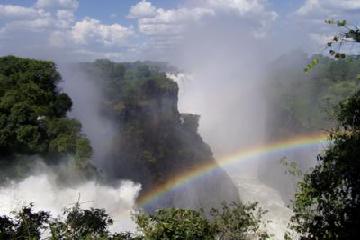 Devil’s Cataract and Main Falls at Peak Flow February 6, 2009 7:10 am - Having never got there when in lived in South Africa, my wife and I spent a few days at the Kingdom Hotel in early May 2007 on a visit to SA from Australia. The Zambezi was at peak flow and though our viewing was restricted to Devil's Cataract and the Main Falls it was simply… ...Read More
Devil’s Cataract and Main Falls at Peak Flow February 6, 2009 7:10 am - Having never got there when in lived in South Africa, my wife and I spent a few days at the Kingdom Hotel in early May 2007 on a visit to SA from Australia. The Zambezi was at peak flow and though our viewing was restricted to Devil's Cataract and the Main Falls it was simply… ...Read More

